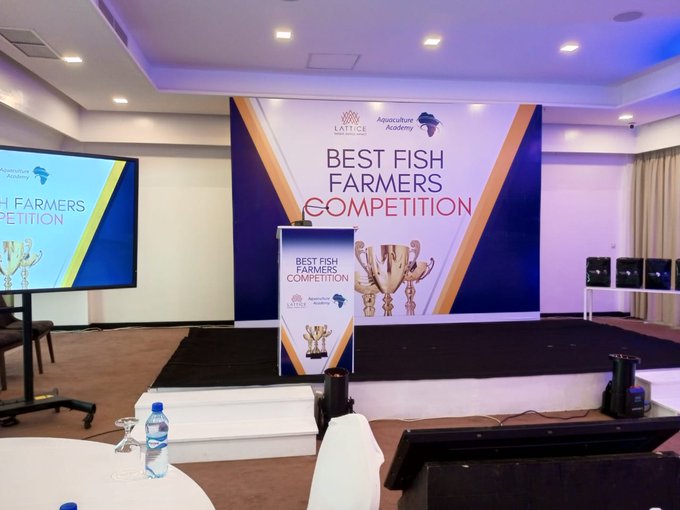
By George Munene
While the cost of fish feeds might be expensive, experts and commercial farmers warn new farmers that homemade feed formulation may be even costlier.
Speaking during the Best Fish Farmers Competition second edition (2023) held this week at the Sarova Imperial Hotel in Kisumu County, the competition’s inaugural winner George Muga cautioned farmers that cheap feed can end up being costly: “There’s a lot that goes into fish feed formulation and production which most farmers lack the expertise to constitute. I have performed experiments with both commercial and farm-made feed, as a professionally trained accountant, I can assure you that it is cheaper to buy more expensive feed than relying on other fish feed sources. With most on-farm feed you might spend more than you would have purchasing store-bought feed.”
Identifying the exorbitant cost of feeds as a major hindrance to the success of aquaculturists, fish feed maker Tunga Nutrition’s Commercial Manager Esther Katonga said the company would be increasing its production capacity in Nairobi to cut down on import costs. This cost-saving she said will be passed onto fish farmers. She added that some farmers lack the know-how on how to effectively use fish feeds which increases their production cost. “We are not only selling feed but training our farmers as well on how to best utilise them.”
Related News: Fish feed maker announces competition for aquaculture farmers & students
Related News: Busia fish farm uses flies to make 30% cheaper & healthier feed
The company highlighted that it can do little to change the high feed price as the sourcing cost of raw materials used to make fish feed remains high, not just in Kenya but globally as well. “As a company, we are looking at alternative ways of making feed cheaper. The major cost in fish feed and human food is protein, unfortunately, this competition extends to sourcing for soya– the main protein in fish feed. We are actively working on integrating alternative protein sources such as insects like Black Soldier Flies, and other plant sources to bring down feed cost,” pointed out Tunga Nutrition Regional Technical Manager Audrey Nyambura.
She however urged farmers to feed their fish on complete commercial feed as it still realises a profit if done right. “Feeds are generally 70 per cent of the cost of production in animal husbandry and we are practicing a culture that is generally expensive. Farmers must ensure they get full value from this 70 per cent to realise any profits from commercial fish farming.
A 300 to 700-gram fish from Lake Victoria has grown for three to five years. No commercial enterprise can rear fish for that long. What we do as commercial feed producers is make an improved complete ration of what tilapia intake in the lake compressed in a pellet so it’s easy for the farmer to record input and output,” she said.
For homemade feed makers ingredients such as minerals and proteins are difficult to acquire and their mixing ratio is also difficult for farmers to get a handle on. Even homemade compacted feeds still sink when given to fish. This is because to make a pellet float, you do not just need to pelletize it but also extrude it. This involves cooking compressing, making it porous, drying, and finally extrusion. Its size must also be exact because it is measured against the stage of tilapia growth and the throat of tilapia. If you are feeding 4 mm of pellet to a one-gram fish you won’t realise adequate, uniform growth.
Vincent Oduor of Barn Aquaculture Limited, Kisumu County, was voted the best fish farmer in 2023. He took home 1,000 kilograms of free high-quality feed as well as free training for his farmworkers at the Lattice Aquaculture Academy among other goodies.
Related News: Tilapia fish feeding guide
The other prize winners were Kirinyaga County’s Margaret Mwema of Laguna Farms Limited who was runner-up, and Daisy Khadiji of Chemuche Aqua Farm, Kakamega County, who emerged third overall.
Dominic Oloo, Chore Fish Farm, and Evalyne Adhiambo, Evagric Farm Enterprise, both of Kisumu County, were fourth and fifth respectively.
The event which aims to award the most innovative fish farmers and promising students connects aquaculture stakeholders to accelerate knowledge sharing in the aquaculture sector.
It is held annually and was sponsored by Lattice Aqua, Tunga Nutrition, Larive International, and the Dutch government.